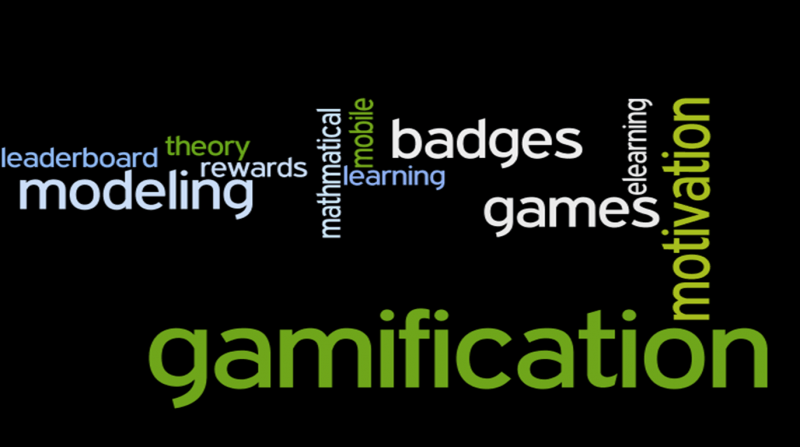Top eLearning and EdTech Trends for 2015
We here at DigitalWits spent the past four months talking with people in large companies, elearning agencies, corporate training departments, human resources, recruiting, edtech-focused venture capitalist firms, staffing agencies, instructional designers (both full-time and freelance) and our own clients over the past year to come up with our 2015 eLearning Trends Forecast. We identified eight key trends. Some of the trends didn’t surprise us, as we’ve had our eye on these for a while. But there were some—dealing with instructional designers--that had us snapping our heads back in a double-take.
1. Learning and Performance (L&P) departments will become profit centers.
 Learning and Performance managers plan to pump up corporate profits by creating, marketing and managing for-profit MOOCs.
Learning and Performance managers plan to pump up corporate profits by creating, marketing and managing for-profit MOOCs.
I’ve talked about this before, but training managers in medium and large companies tell us transitioning from a cost center to a profit center is a main focus for their departments in the coming year. Big data will play a big role in this trend, too, as companies will be forced to track eLearning ROI and effectiveness. Some ways L&P centers will achieve revenue-generating status are through other trends, such as SaaS (School as a Service) and authenticated MOOCs (as opposed to free, or open, MOOCs).
2. SaaS (School as a Service).
 This trend is already huge in the academic sector, but more corporations are starting to get into this arena. Just as companies have already become their own publishers and producers, they will now become their own schools and academies where they build, market and manage their own online degree and certification programs.
This trend is already huge in the academic sector, but more corporations are starting to get into this arena. Just as companies have already become their own publishers and producers, they will now become their own schools and academies where they build, market and manage their own online degree and certification programs.
One of the biggest challenges corporate managers say they face in 2015 is closing the skills gap. It’s not surprising, then, that the end-goal of SaaS initiatives is to attract, train and retain recruits in high-tech fields like programming, mobile application development, cyber security, financial services, oil and gas, and biotech. But the manufacturing industry is also entering the SaaS environment to recruit and train workers on new factory technologies like 3D printers and laser scanners. A recent Accenture study shows 75% of manufacturers report a moderate to severe shortage of skilled workers. In manufacturing, the approach will be semi-synchronous, hands-on, and use mobile smart-watch learning (see trend # 7). It’s clear corporate America is embracing edtech in spades.
3. MOOCs (Massive Online Open Courses) move mainstream and require authentication.
 MOOCs continue to be a strong growth area for Learning & Performance departments in 2015.
MOOCs continue to be a strong growth area for Learning & Performance departments in 2015.
One of the biggest trend from 2014 continues into 2015, but with a twist: MOOCs in corporate America will move from employee training to recruiting, vendor education and consumer education. And don’t expect these courses to be “open;” they will be fee-based and require learners to sign up with their real names, addresses and emails. Another projected area of growth is co-branded MOOCs between corporations and established academic universities.
4. Gamification will be the new problem-solving tool – not just a tool to enhance learning.
 Gamification expands beyond eLearning and training.
Gamification expands beyond eLearning and training.
Gamification will no longer be limited to learning; it will be the killer app for new product development and complex problem solving. Companies will get the entire organization involved in solving problems once reserved for engineers, scientists, chemists and programmers. This has already happened. FoldIt gamers solved--in a mere three weeks--the riddle of the HIV enzyme that had baffled scientists for over a decade. And now casual gamers in corporate America may soon be able to devise new medical and pharmaceutical treatments, or find creative solutions to more common problems such as distribution hiccups, through gamifying the problem.
5. MVC (Minimum Viable Course) Development will become the norm in tech and software industries to shorten product launch cycles.
 Minimum Viable Courses will be an eLearning development trend in 2015.
Minimum Viable Courses will be an eLearning development trend in 2015.
Rather than wait with launching a product until the entire product training is completed, companies will develop short, just-what’s-needed-now modules, and then roll out the rest of the training in a MOOC as consumers and vendors complete the initial MVC modules. No more waiting for the entire course to be developed before the product “goes live.”
6. E-Learning moves from “seat time” to competency and in doing so becomes more personalized.
 Learning content, questions and feedback will be tailored to the learner’s proficiency level, interests, and personal motivators. By learning about learners, e-courses will help adults learn in the manner, pace and method which suits them best. Personalized feedback systems are mostly handled through Artificial Intelligence (AI) subsystems.
Learning content, questions and feedback will be tailored to the learner’s proficiency level, interests, and personal motivators. By learning about learners, e-courses will help adults learn in the manner, pace and method which suits them best. Personalized feedback systems are mostly handled through Artificial Intelligence (AI) subsystems.
7. You’ll be wearing your learning.
 "Wearable eLearning" will be incorporated as a "while-you're-doing-it" app. Radical eLearning design changes will be required for the mini screen.
"Wearable eLearning" will be incorporated as a "while-you're-doing-it" app. Radical eLearning design changes will be required for the mini screen.
When watching eLearning trends, the one to watch is the watch. As in smart watch. Obviously the micro screen isn’t suited to all types of mobile learning, but it has direct applications for in-the-moment and on-the-job performance improvement to immediately alert workers when they are performing a task incorrectly (or unsafely) through motion-sensor technologies like accelerometers, gyroscopes, compasses, and pressure-sensors. These learning-on-your-watch programs will be much like an interactive virtual coaching session via a connected Bluetooth headset. Adidas has already done this on the consumer education side with its miCoach Smart Run virtual coaching product.
8. Freelance eLearning ID (instructional designer) rates will decline; salaries for full-time IDs –with specialized skills--will increase.
 "Super IDs" who have gamification and programming skills will be in high-demand for full-time positions. Freelance IDs will be hired for short-term projects and staff augmentation.
"Super IDs" who have gamification and programming skills will be in high-demand for full-time positions. Freelance IDs will be hired for short-term projects and staff augmentation.
This is the trend that surprised us most. We expected freelance rates to increase, given the rise of the gig economy and contingent workers. But there are a few things happening in the eLearning industry that entice companies to pay more for certain types of full-time IDs, and less for “general practice” freelance IDs who have just the basic skills (instructional design chops, proficiency in rapid development tools such as Storyline and Captivate, graphic design abilities and strong writing/storytelling skills).
Top 6 eLearning Industry Factors Driving Instructional Designer Compensation
1. Companies are bringing development of gamified solutions and highly creative training development in-house.
As companies make the move to branded, gamified, for-profit academies, they are upping their game (pun intended) and bringing highly-specialized IDs (those with instructional design, gamification, 3D animation, business strategy consulting and course marketing expertise) in house. As they do more of these high-end courses, it becomes more cost-effective to hire full-time “super IDs” instead of expensive eLearning agencies.
Finding an ID with all of those qualifications is a tall order, to be sure. But IDs with all of those skills do exist, and they are paid well into the six-figures for their unique expertise. In our research, we uncovered 24 different companies who either have recently hired or plan to hire so-called "super IDs" for the 2015 MOOC and gamification initiatives. Surprisingly,none required an advanced degree in instructional design; they all indicated a strong portfolio demonstrating the skills desired far outweighed an advanced degree in an ID discipline.
Some companies are not looking for an all-in-one “super ID,” but rather one with course marketing, business strategy and game theory (mathematical modeling and user-interface design expertise); they get the other skills by hiring media experts with animation, motion graphics and programming experience. Even hiring two FTEs is less expensive than hiring an agency if most courses developed will be high-end.
Of course, regardless of the position--whether "super ID" or general practice ID- instructional designers will need a solid foundation in adult learning methodologies (either through direct on-the-job experience or education). But the trend is clear: the general-practice ID will likely find fewer and fewer full-time options, but more freelance options for fill-in-the-gap projects.
2. Companies that don’t hire full-time instructional designers for high-end courses, hire eLearning agencies—not freelancers.
Companies that may have only a few high-end courses (thereby not warranting a full-time "super ID") shy away from freelancers -- even if the freelancer has all of the high-end skills required.
Why? Agencies (an incorporated organization with about 15 or more concurrent clients) specialize in complex course development and have the portfolio and experience in gamification and 3D simulation environments. Corporations feel more confident in agency abilities than those of a freelancer. A few hiring managers told me they are leery of freelance IDs who may have to subcontract to other freelancers for additional skills. Training managers simply feel more secure hiring a single agency with all of the talent under one roof.
3. Freelancers will be used primarily for staff augmentation and Level 1 and Level 2 interactivity programs.
Although these programs require experienced and talented instructional designers, they don’t require the high-end skills of programming, 3D animation, gamification or business strategy consulting. Because the complexity of these programs is much less than the Level 3 and Level 4 courses, companies aren’t willing to pay as much for freelance, sole-proprietor IDs.
4. Supply and demand: The freelance market is getting crowded.
There are more and more freelance instructional designers (who either freelance full-time or do it on the side as a supplement to their full-time income) and companies can pick and choose highly talented IDs from a very large pool for their general practice courses. Several freelance IDs say they see more and more of a bidding-war environment than they have in the past—even when pitching to direct clients, as opposed to staffing agencies.
5. Smart Sourcing: It's the new outsourcing.
Thanks to consumer backlash, outsourcing by U.S. companies has declined, and all indications are that it will continue to do so. But "smart sourcing" (the practice of hiring IDs who live in low cost-of-living states and cities within the U.S.) is on the upswing.
That means a freelance instructional designer living in New York, Los Angeles or Washington, D.C., would likely lose out on a project to an ID living in Keokuk, Iowa, or Cincinnati, Ohio. The Iowa ID can afford to take a much lower rate and still make a good living and hiring managers know this. Of course this only applies if the project is 100% remote, which many are now.
6. Blurring lines between full-time worker and freelancer.
Another reason companies shy away from sole-proprietor instructional designers for larger projects comes down to simple tax compliance. Hiring an incorporated eLearning agency, or a sole-proprietor with an LLC (Limited Liability Corporation) designation, makes it very clear to the IRS that the people doing the work are not employees of the company. (This applies to U.S.-based companies.)
When hiring a freelancer without a corporatet structure for a long-term, complex project, those employee/contractor lines are quickly blurred—especially if the company is the only client the freelancer has for an extended time period. Hence, freelancers are increasingly only hired for short-term, one-off projects and not put on retainer as they have been in the past.
Another trend to avoid tax issues: Companies are hiring more freelancers for fewer hours per week for a single project. In the past, companies hired a single freelancer to handle one entire project from start to finish. Now, however, the trend is to hire two to three instructional designers, and limit the IDs to 10-15 hours per week each.
However, the freelancer with an LLC designation will have a leg up for such contracts. Hiring managers at eLearning agencies that hire freelancers told us they are increasingly demanding freelancers have a corporate structure--as well as business liability insurance and errors and omissions insurance. Part of the reason is to protect the agency, but the other part is that agency clients demand agency subcontractors are also businesses--not individuals.
There are a couple of very bright spots for freelancer instructional designers. As companies hire full-time employees primarily for those high-end, high-profit courses, they are turning to freelancers to do the routine, but much-needed and ongoing, employee training. So, although freelance rates may decline, the volume of work open to freelancers should increase, even if the projects are shorter-term and limited to 10-15 hours per week. The other bright spot: Because most of the freelance work available will be Level 1 and Level 2, instructional designers new to the field will have a real opportunity to get some experience.
Then, too, there are many high-profit areas freelancers are overlooking, where they won't have to worry about being limited to 10-15 hours per week, or lower rates. DigitalWits has another report coming out soon: The Top Most Lucrative (Yet Hidden) Markets for Instructional Designers. If you'd like to receive the free report, just sign up here and we'll send it your inbox when it's published! The free report will be out before the end of the year.
One thing is for sure: 2015 will bring exciting new opportunities in edtech and eLearning!
자료출처 : http://elearningindustry.com/top-8-elearning-and-edtech-trends-2015
'정보공유 > 교육' 카테고리의 다른 글
| Top Education Trends in 2015 (0) | 2015.08.28 |
|---|---|
| 2015’s Top Education Technology Trends (0) | 2015.08.28 |
| 5 Top Trends in Education Technology 2015 (0) | 2015.08.28 |
| 포브스 예측 2025 교육산업을 흔들 다섯 가지 기술흐름 (0) | 2015.08.26 |
| Best Websites for Teaching & Learning 2015 (0) | 2015.07.24 |